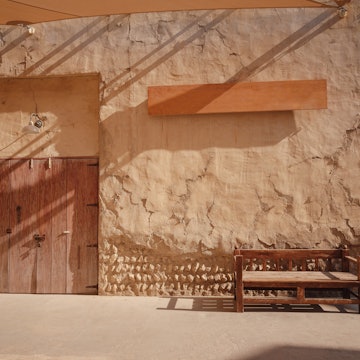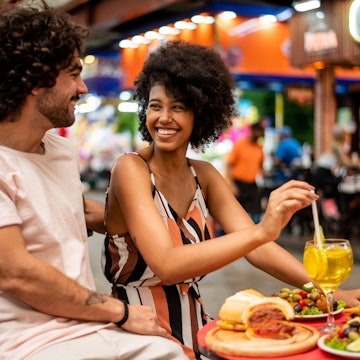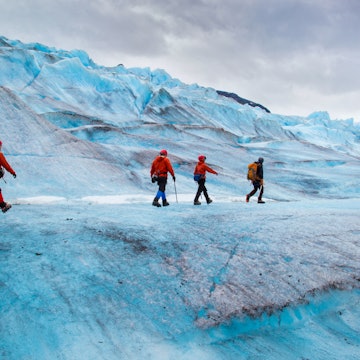
The 9 best things to do in Manaus, Brazil

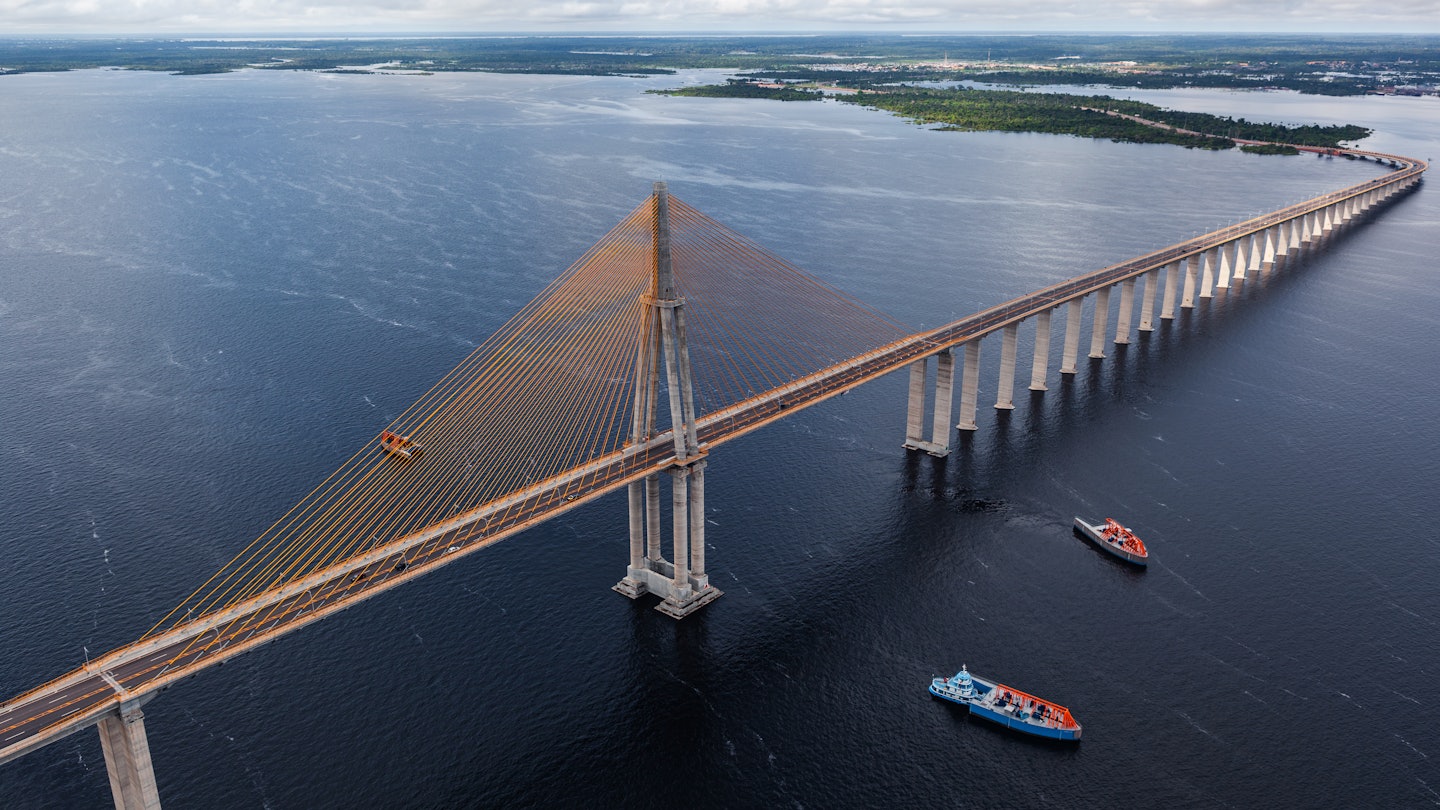
Discover the regional capital at the edge of the Amazon. Carlos Grillo/Shutterstock
Manaus is where the Rio Negro and Rio Solimões rivers meet to form the Amazon. The city is both a modern metropolis and peerless Amazon gateway.
It’s best known as the starting point for explorations of the rivers and rainforests, and it fulfills this role admirably, with excellent deep-Amazon immersive excursions and expeditions on offer. But the city also wins travelers’ hearts with seafood restaurants and a rich cultural life.
Its story is also one of Brazil’s more picaresque tales. Taking its name from the Manaós, who once controlled this corner of the Amazon, it was later one of the first towns in Brazil to receive electricity. As the epicenter of the 19th-century, rubber-inspired golden age, Manaus was catapulted to the position of South America’s richest city. Brazil's wealthy elites, soldiers of fortune and would-be adventurers flocked here, and Manaus became a byword for excess. Fascinating echoes remain of that era.
Getting beyond Manaus and out into the jungle is the goal of pretty much every visitor to the Amazon. Day trips from the city are possible, including to the Encontro das Águas (Meeting of the Waters) or to waterfall-rich Presidente Figueiredo. In between these excursions into nature, here are the best things to do in this buzzing port city.

1. Admire the opera house in the jungle
One of the world’s most beautiful opera houses and certainly the most famous building in the Amazon, Teatro Amazonas rises from the Largo de São Sebastião plaza like a boto rosa (pink dolphin) springing up from its scaled-mosaic island bed. Down below, its salmon-pink walls shelter the most improbably located opera house in the world.
If you’re here for a performance, check out the original painted curtain depicting the Encontro das Águas (Meeting of Waters), as well as hundreds of masks curiously lining the Doric columns of the ornately embellished interior. The lyre-shaped auditorium’s superlative acoustics make listening to music a real treat. Some shows at Teatro Amazonas are ticketed, but many are free and allotted to the first queuers.
Planning tip: Tours of the opera house in multiple languages run every hour throughout the day, from 9am to 5pm Tuesday to Saturday (to 1pm Sundays).
2. Enjoy Amazonian cooking for lunch
Manaus’ first Indigenous restaurant, Biatüwi, opened in late 2021. allowing the Ramos family to share its intergenerational recipes from the Tucanu and Sataré Mawé people with a wider audience.
In a cozy, white-walled dining room on one of the oldest cobblestone streets in Manaus, diners enjoy a gourmet feast for the senses. Mains include a range of roasted fish wrapped in cocoa leaves and accompanied by a dazzling, tangy array of condiments and sauces.
Don’t forget to order a side or two of the Saúva or Maniwara ants, toasted in manioc flour – a memorable Indigenous staple. The ants imbue grilled fish and soups with zest and crunch, to say nothing of their health benefits. The drinks menu includes fermented pineapple or sugarcane juice, as well as a few nonalcoholic juices.
Planning tip: Biatüwi only opens for lunch from Wednesday to Saturday.
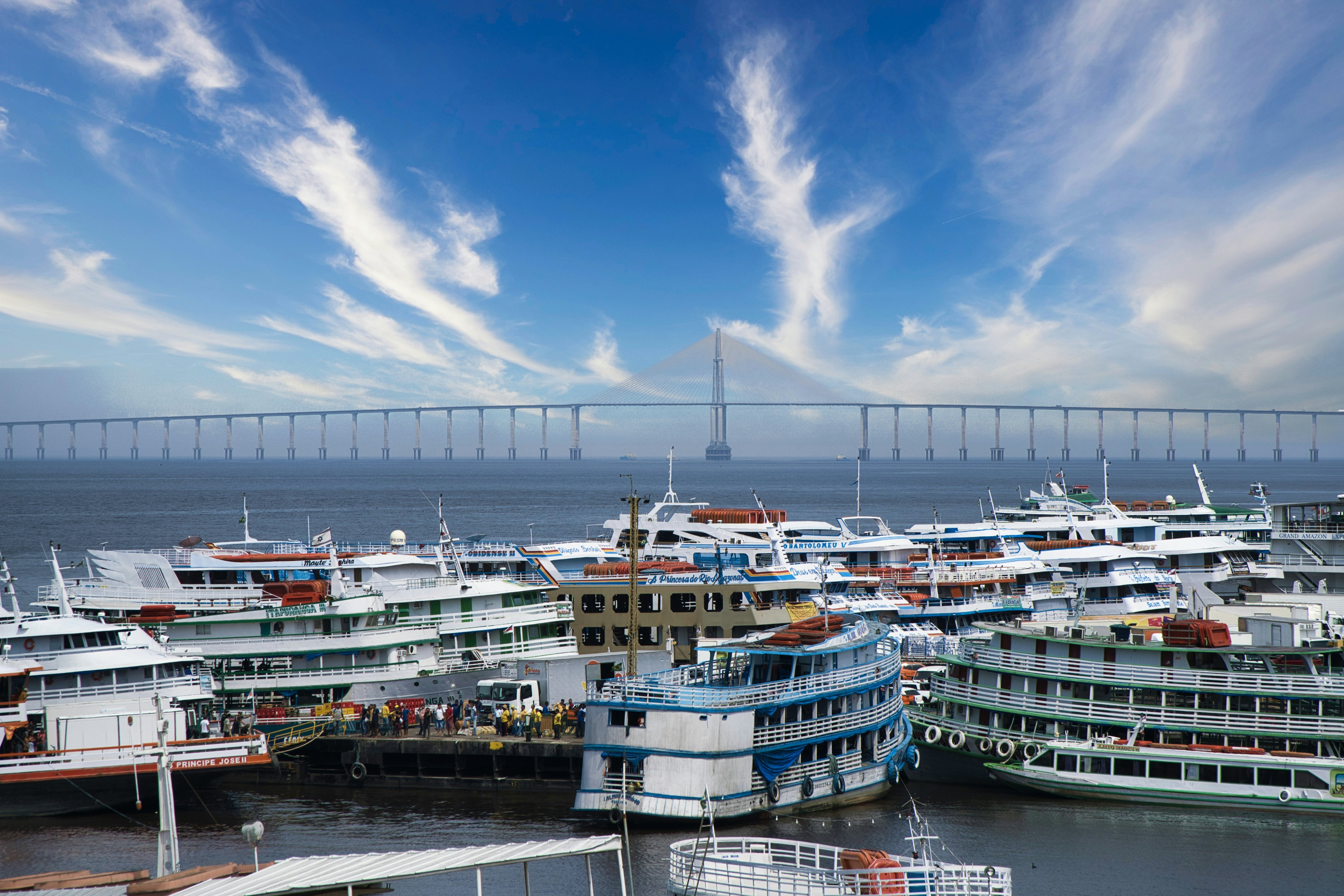
3. Tour the river and its highlights
Manaus sprawls to the far horizon, and getting a perspective on the Amazon and the Rio Negro requires some planning.
Perhaps the best thing you can do is take a boat out to see the Encontro das Águas (Meeting of the Waters), where the milky brown Solimões coursing down from the Andes joins the opaque dark waters of the Rio Negro. The line between two of the world’s largest rivers is curiously delineated for some 6km before merging to form the mighty Amazon. Most local tour operators can make the necessary arrangements.
If you have a little more time, take a tour cruising along a river “street,” where you’ll see pets lazing, babies playing and congregations singing from the rooms of a bobbing school, plus restaurants, a chapel, sweets shop and colorful wooden homes of the Catalão floating river community.
Heading back to Manaus, you’ll pass under Brazil’s longest cable-stayed bridge. Opened in 2011, Ponta Rio Negra straddles the banks of one of the Amazon’s major rivers.
For an excellent view of the Rio Negro, head toward the bridge and to the third floor of Mirante (entry free), a lookout point with cafes, restaurants and occasional art exhibitions. From here, you’ll also have an excellent view of the old but still-functioning port that rises and falls with the Negro’s fluctuating water levels.
Planning tip: Manaus’ main tourist areas are relatively safe to walk day and night, including Largo de São Sebastião, much of Centro’s historic area, Adrianopólis and Ponta Negra beach. Buses travel frequently around Centro and fan out from there throughout the city.
4. Get a taste of Manaus’ market life
Spending a morning immersed in three riverbank markets in Manaus provides a vivid taste of city life.
Start at the Feira do Peixe, the city's main fish market. If you arrive close to sunrise, you’ll see fishing folk hauling giant Amazonian fish balanced on their heads from their boats. The fascinating array of locally caught fish – and the sales pitches that accompany them – lasts most of the morning.
Next door, the Feira da Banana is just as clamorous. Although bananas are the main event here, other fruits, including watermelons, make an appearance when they’re in season.
The Mercado Municipal Adolpho Lisboa, opened in 1882, remains a mainly local affair with stalls selling medicinal plants, anaconda oil and the like. Some stalls sell handicrafts for visitors in search of mementos.
Planning tip: These markets are all open roughly from 6am to 3pm daily.

5. Dine out on fresh seafood and more
Manaus may not be as famous for its dining scene as (relatively) nearby Belém, but there are still plenty of excellent places to eat, serving everything from pizza, fish and steaks to vegetarian options.
For a quick snack or a large suco (fresh juice) made from Amazonian fruit – guaraná, cupuaçú and graviola – try Skina dos Sucos (it’s closed on Sunday). A popular spot on the terrace at Largo de São Sebastião, Tambaqui de Banda does beer, cocktails and grilled tambaqui (fish); it’s also a great spot for people-watching on the plaza, and is open late. Loved by locals, Peixeria do Quixito is an open-air gem where fish is cooked expertly in every way possible (there’s live music on Friday evenings). Another popular local spot, Picanha Mania has a couple of outlets around town and is known for grilled meats and fish.
For a more sleek space to dine on fish or pasta, head to Barollo, which morphs into a wine bar with live music in the evening. In a smart dining room overlooking Largo de São Sebastião, Caxiri showcases haute Amazonian cuisine.
One of Manaus’ top gourmet restaurants, Banzeiro is especially well regarded for its fish menu with varieties such as pirarucu and tambaqui. And also at the top end of town, Coco Bambu Manaus does artfully prepared seafood and steaks, exquisite desserts and cocktails. Book ahead.
Planning tip: If you’re planning to concentrate your visit around Centro, you can easily cover most places on foot. For anything further afield, Uber is ubiquitous, as are private-hire taxis.

6. Go shopping for local handicrafts
The best place to start your shopping in Manaus is Galeria Amazônica, an enterprise of community organizations spearheading Indigenous crafts. Expect an outstanding collection of beautifully made items, mostly from the Waimiri-Atroari. At Biatüwi, the Indigenous food restaurant, a two-room shopfront has carefully chosen handicrafts and homewares from communities across the Amazon to peruse.
For the pick of Manaus’ public markets, Mercado Municipal Adolpho Lisboa is a smaller-scale replica of Paris’ fabled Les Halles market. The handicrafts here range from slightly kitsch to high quality. And if you’re heading on an Amazonian expedition or a multi-day riverboat journey, Rua dos Barés you will have kitted out with everything from machetes to hammocks and mosquito nets.
7. Learn more Manaus stories
To learn about Manaus and its relationship to the forest from which it was carved, head for the outstanding Museu do Seringal Vila Paraíso, which occupies the grounds of a former rubber-baron estate. It’s the counterpoint to the Teatro Amazonas – for these trees are what made the theater possible.
Here, the museum includes tours of the original townhouse, a replica rubber-tapper shack and smokehouse, and trails where you can see how rubber trees are tapped. You can even scrape sap from the trees yourself and roll it in your palms until it melds into gummy latex.
Detour: If you’ve rented a car for the day to get here and to other outlying attractions, on your way back stop by two dusty but fascinating old museums dedicated to the people of that same forest to admire Indigenous cultural artifacts: the Museu Amazônico and the Museu do Índio.

8. Relax on Ponta Negra beach
Nearly 20km northwest of Manaus' town centre, Ponta Negra is the epicenter of Manaus at its feel-good best. The beach at Ponta Negra opens roughly from April to October – at other times, low water levels and the presence of stingrays mean the authorities to close things down.
The classic Ponta Negra experience involves an afternoon swim, then relaxing with a caipirinha at one of the chilled beachside botecos (bars). You could also head up the steps to an elevated promenade where food stalls, children’s playgrounds, bars and sellers of coconut water extend over 1km. On a balmy evening, the atmosphere is irresistible.
Detour: For another, less busy Rio Negra beach, grab a vehicle and head for for Praia da Lua, Manaus’ best beach.

9. Explore the trees of Jardim Botânico Adolpho Ducke
Manaus tells its natural and human stories really well – and the Jardim Botânico Adolpho Ducke is one place that combines both the natural and human-made to spectacular effect. Covering over 100 sq km, this “garden” is in fact the world’s largest urban forest.
Bring a decent pair of walking shoes to explore the network of five short trails as you immerse yourself in this dense, green world. There’s also an open-air museum that includes rotating exhibits on Amazonian flora and fauna, and a spectacular 42m-high observation tower.
Planning tip: The garden is busier on weekends, and free on Tuesday.
This article was adapted from Lonely Planet’s Brazil guidebook, published in October 2025.






